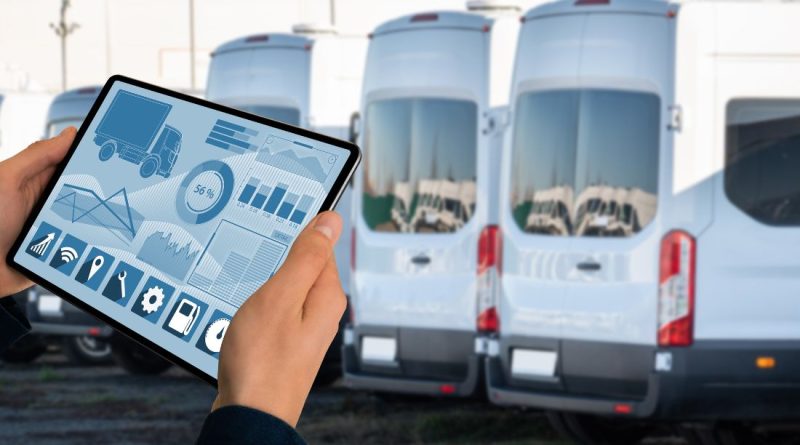Exploring the Benefits of Modern Government Fleet Management
In today’s fast-changing world, government fleet management is crucial for enhancing public service delivery. By integrating modern technology and best practices, government agencies can improve operational efficiency, reduce costs, and comply with safety regulations. This article delves into the various aspects of government fleet services, emphasizing the benefits of adopting modern fleet management practices, supported by examples and insights from industry experts.
Understanding Government Fleet Management
Government fleet management encompasses the oversight of a fleet of vehicles operated by government bodies. This includes tasks such as procurement, maintenance, vehicle tracking, and disposal.
The Scope of Government Fleet Services
Government fleet services go beyond just cars and trucks; they also include buses, emergency vehicles, and specialized equipment. The primary goal is to use these fleets efficiently to serve the public good.
Key Components of Fleet Management
- Vehicle Procurement: Selecting the right vehicles based on needs, budget, and environmental considerations.
- Maintenance and Repairs: Conducting regular maintenance to prolong vehicle life and prevent breakdowns.
- Fuel Management: Monitoring fuel usage to identify inefficiencies and reduce costs.
- Driver Management: Training drivers on safe practices and monitoring their performance.
- Data Management: Collecting and analyzing data to improve decision-making and operational efficiency.
Understanding these components is vital for effective fleet management in government operations.
Benefits of Modern Technology in Fleet Management Government
Modern technology has significantly transformed government fleet management.
Real-time Tracking and Monitoring
GPS and telematics systems enable agencies to track fleets in real time, providing insights into vehicle location, speed, fuel use, and driver behavior.
Benefits of Real-time Tracking
- Improved Route Optimization: Fleet managers can adjust routes based on traffic and road conditions, reducing travel time and fuel costs.
- Enhanced Accountability: Real-time monitoring ensures drivers adhere to schedules and practice safe driving, increasing overall accountability.
Automation of Administrative Tasks
Modern fleet management software automates routine tasks, allowing managers to concentrate on strategic initiatives.
Examples of Automation
- Scheduling Maintenance: Automated reminders help keep vehicles in good condition and prevent breakdowns.
- Reporting and Compliance: Automated tools simplify adherence to regulations, ensuring vehicles meet safety and operational standards.
Improved Communication
Mobile apps and communication tools ensure that your fleet management government can easily connect with drivers, providing them with up-to-date route and duty information.
Cost Efficiency: Optimizing Your Fleet Budget
A significant advantage of modern government fleet services is the potential for cost savings.
Understanding Fleet Costs
Fleet management costs can be categorized into:
- Acquisition Costs: The initial purchase or lease price of vehicles.
- Operating Costs: Ongoing expenses like fuel, maintenance, insurance, and repairs.
- Administrative Costs: Costs related to managing the fleet, such as personnel salaries and software subscriptions.
Strategies for Cost Optimization
- Regular Maintenance: A proactive maintenance plan can prevent expensive repairs and extend vehicle life.
- Fuel Efficiency: Opting for fuel-efficient vehicles and training drivers in fuel-saving techniques can lower operating costs.
- Vehicle Utilization: Monitoring vehicle use can identify underused assets that can be sold or repurposed, leading to more efficient purchases.
- Telematics Solutions: Implementing telematics can enhance operational efficiency and reduce fuel and maintenance costs.
Enhancing Safety and Compliance in Government Fleets
Safety is paramount in government fleet operations. Proper strategies and technologies can enhance safety and ensure compliance.
Importance of Safety in Fleet Management
Government fleets often operate in high-stakes situations where safety is critical. Ensuring vehicle safety protects both drivers and the public.
Implementing Safety Programs
- Driver Training: Regular training on defensive driving can significantly reduce accident rates.
- Safety Equipment: Incorporating advanced safety features, like collision avoidance systems and GPS tracking, enhances driver safety.
- Compliance Monitoring: Systems that track adherence to safety regulations ensure all vehicles meet legal standards.
The Role of Data Analytics in Improving Fleet Performance
Data analytics plays a vital role in modern fleet management and government operations. Agencies can utilize data to make informed decisions that enhance fleet performance.
Types of Data to Analyze
- Vehicle Performance Data: Metrics such as fuel consumption, maintenance costs, and operational efficiency.
- Driver Performance Data: Monitoring driver behavior, including speed, braking, and route adherence.
- Cost Data: Evaluating total ownership costs for each vehicle to identify areas for improvement.
Benefits of Data-Driven Decisions
- Informed Decision-Making: Data analytics provides insights that help fleet managers make strategic decisions regarding vehicle purchases, maintenance schedules, and driver training.
- Predictive Maintenance: Analyzing historical data allows managers to anticipate maintenance needs, reducing downtime and costs.
- Performance Benchmarking: Comparing fleet performance to industry standards identifies areas for improvement and best practices.
Sustainability Initiatives: Greening the Government Fleet
As environmental concerns rise, many government agencies are focusing on sustainability in their fleet operations.
The Importance of Sustainable Fleet Practices
Sustainable fleet management reduces environmental impact and demonstrates a commitment to responsible governance.
Strategies for Greening the Fleet
- Transitioning to Electric Vehicles (EVs): Investing in electric or hybrid vehicles reduces greenhouse gas emissions and fuel costs.
- Utilizing Alternative Fuels: Exploring options like biodiesel, compressed natural gas (CNG), and hydrogen fuel enhances sustainability.
- Implementing Eco-Driving Programs: Training drivers in eco-friendly driving practices improves fuel efficiency and lowers emissions.
Measuring Sustainability Impact
Tracking progress and measuring the impact of sustainability initiatives is crucial. Key metrics include:
- Reduction in Fuel Consumption: Monitoring fuel usage before and after implementing eco-friendly practices.
- Emissions Reduction: Calculating the decrease in greenhouse gas emissions from transitioning to greener vehicles.
- Cost Savings: Evaluating the financial benefits of reduced fuel use and maintenance costs from newer, efficient vehicles.
Innovative Solutions for Maintenance and Repairs
Modern technology has revolutionized how government fleets manage maintenance and repairs, ensuring vehicles remain operational.
Predictive Maintenance Technologies
Predictive maintenance employs data analytics and IoT devices to monitor vehicle health. Analyzing this data helps fleet managers anticipate maintenance needs before they escalate.
Benefits of Predictive Maintenance
- Reduced Downtime: Early detection of issues prevents unexpected breakdowns, keeping the fleet operational.
- Cost Savings: Proactive maintenance decreases costs associated with emergency repairs and vehicle replacements.
Mobile Maintenance Solutions
Mobile maintenance units equipped with necessary tools enable on-site repairs, reducing downtime and improving service efficiency.
Fleet Maintenance Software
Investing in fleet maintenance software streamlines management of maintenance schedules, repairs, and inventory. Key features include:
- Automated Scheduling: Setting reminders for routine maintenance tasks ensures timely service.
- Inventory Management: Tracking spare parts and supplies guarantees necessary items are available when needed.
- Reporting Features: Generating reports on maintenance history and vehicle performance aids in decision-making.
| Section | Key Points | Examples/Insights |
| Understanding Government Fleet Management | – Oversight of various vehicle types
– Focus on efficiency for public good |
Government agencies managing cars, buses, and emergency vehicles |
| Benefits of Modern Technology in Fleet Operations | – Real-time tracking
– Automation of tasks – Improved communication |
Use of GPS for route optimization; fleet management software for scheduling maintenance |
| Cost Efficiency: Optimizing Your Fleet Budget | – Categories of fleet costs
– Strategies for cost optimization |
Proactive maintenance plans; telematics to monitor fuel usage |
| Enhancing Safety and Compliance in Government Fleets | – Importance of safety
– Implementing safety programs |
Driver training and compliance monitoring systems |
| The Role of Data Analytics in Improving Fleet Performance | – Types of data analyzed
– Benefits of data-driven decisions |
Predictive maintenance and performance benchmarking against industry standards |
| Sustainability Initiatives: Greening the Government Fleet | – Importance of sustainable practices
– Strategies for greening the fleet |
Transitioning to electric vehicles and eco-driving programs |
| Innovative Solutions for Maintenance and Repairs | – Predictive maintenance technologies
– Mobile maintenance solutions |
On-site repairs by mobile units; fleet maintenance software with automated scheduling |
Modern government fleet management offers numerous benefits that enhance operational efficiency, reduce costs, and promote safety. By leveraging technology, data analytics, and sustainable practices, government agencies can optimize fleet operations, leading to improved public service delivery.
As agencies adapt to a changing landscape, embracing innovative solutions will be essential for maintaining efficient, compliant, and environmentally responsible fleets. The future of fleet management in government lies in integrating advanced technologies and sustainable practices, paving the way for effective public service.

